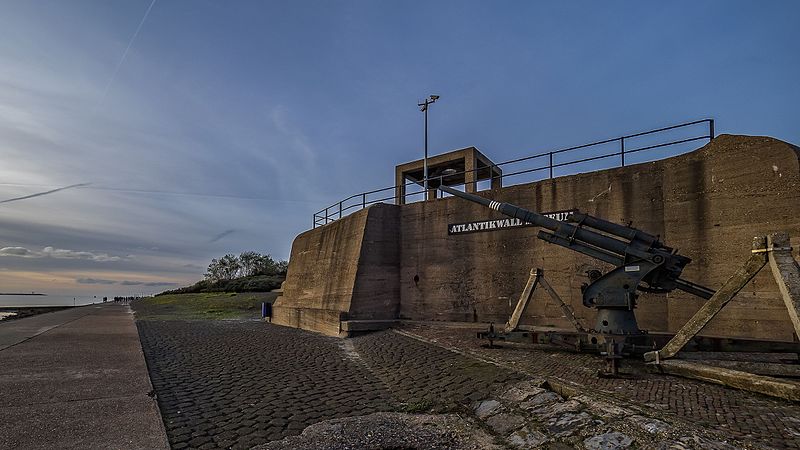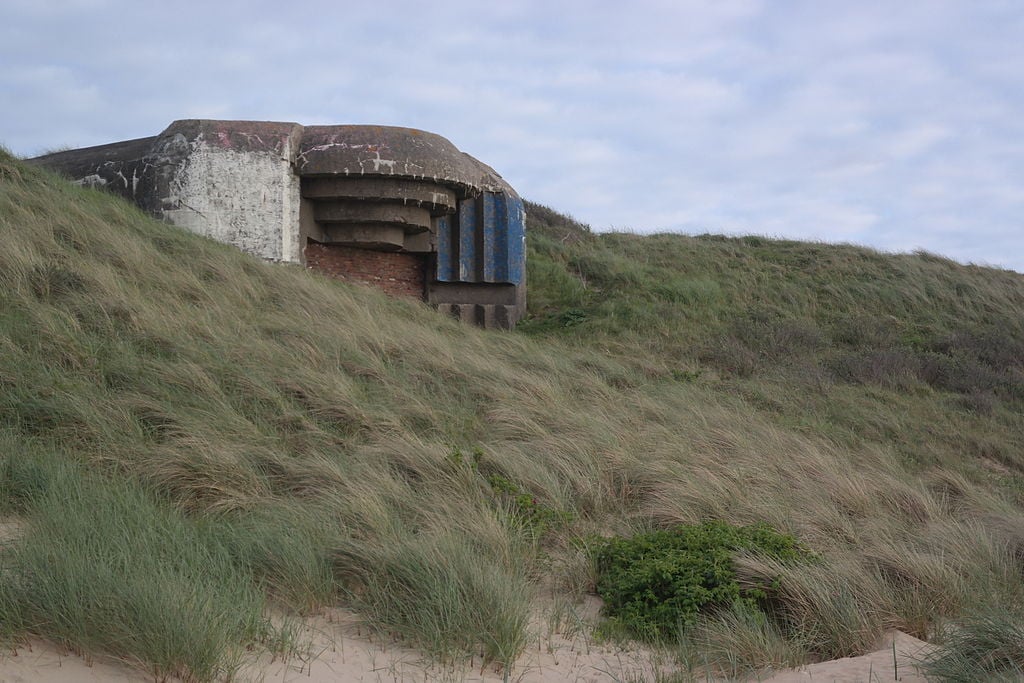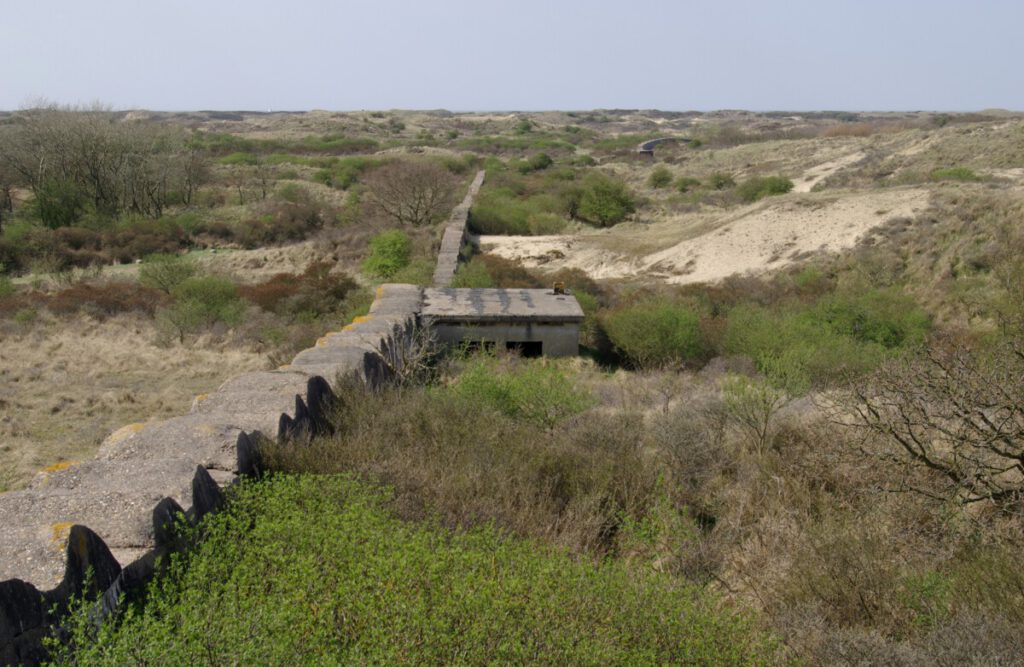You might have noticed concrete bunkers in the dunes along The Hague’s coastline, ominously pointing out toward the sea. What’s up with these bunkers and why are they there in the first place?
The fortifications extending through most of the Dutch coast are part of the so-called Atlantic Wall, built by Nazi Germany.
The project was supposed to extend from the Spanish border in the south, along the coast of France, Belgium, and the Netherlands, right up to the Norwegian coast.
The defensive bunkers and walls didn’t do their job yet their remnants are a reminder of the not-so-distant past.
1942, the start of the Atlantic Wall
From 1939 to 1941, it seemed as if the victory of Nazi Germany was on the horizon.
The Lowlands and France were swiftly conquered in 1940, while Great Britain was undergoing a brutal blitz.
Meanwhile, on the eastern front Operation Barbarossa kickstarted the invasion of the Soviet Union.
READ MORE | Stunning colourised footage of Rotterdam before WWII (video inside!)
Nevertheless, the Nazi leadership was wary of the possibility of a two-front invasion.
With the Blitz in the UK stalling, and Stalingrad blocking Nazi advancement on the eastern front, there were concerns of a possible Allied invasion on the western seaboard.
The building of the Atlantic Wall
Constructions of the Atlantic Wall started in 1942 due to the fear of an invasion from the West.
Initially, it was called the New West Wall, but this didn’t have much of a ring to it so they changed its name to the Atlantic Wall for propaganda purposes.

Nazi Germany directed many resources to construct the Wall with up to half a million people working on it during its peak.
The workers consisted of forced labourers from conquered countries, German soldiers, and professional builders from local communities.
The initial plans involved building 15,000 bunkers along the French, Belgian, and Dutch coasts. Due to limited resources, only 6,000 of those bunkers were finished by May 1, 1943.
In the Netherlands, the initial plan was to build 2,000 bunkers. Only 510 of those bunkers were completed.
Structures of the Atlantic Wall
These bunkers formed the Atlantic Wall out of independent structures in battle.
The bunker was the main fortification found along the Atlantic Wall and there was a major variation of size depending on the strategic location along the coast.

The Wall also consisted of batteries containing anti-aircraft guns, radio installations, and storage facilities for ammunition and troops.
The defences were connected through a series of underground trenches.
Beyond bunkers and trenches, fences, and natural barriers such as steep dunes were also established.
Demolitions along the Atlantic Wall
Building the Atlantic Wall proved to be a traumatic experience for the communities living alongside the coast.
In the Netherlands alone, hundreds of thousands of people had to relocate from their homes which had been demolished by the Wall — some never to return.
In The Hague, for example, the Nazis built a 10-kilometre-long stretch that was 500 metres wide to make an anti-tank ditch, demolishing several neighbourhoods.

They also destroyed many of the buildings alongside the main boulevard in Katwijk, including a historic fisherman’s quarter.
Nature was also hard-hit by the demolitions, excavating the dunes to build the wall. The Nazis cut forests down and destroyed thousands of hectares of farmland to build trenches and mines for the military.
Fall of the Atlantic Wall
From the get-go, the Atlantic Wall was more of a desperate attempt to prevent a Western invasion than it was a well-thought-out strategy. The Wall was, at best, a deterrent through propaganda meant to detract from an invasion.
READ MORE | Photo report: the Netherlands at war, 1940-1945
The failure of the Wall became evident with the Normandy Invasion by Western forces on June 6, 1944.
While some areas of the Wall proved to repel attacks for some time, both on the ground and in the air, allied forces breached the defences relatively fast.
Post-war Atlantic Wall
Many bunkers were demolished immediately after the war throughout the late 40s and the 50s in the Netherlands. More bunkers were demolished in the 60s in Zeeland and Zuid-Holland as they became a flooding hazard.

The Atlantic Wall nevertheless left its mark on the Netherlands and other countries. The ruins, ranging from bunkers to railways and sandpits, can be found all along the coast.
The Hague is one of the most distinct places where you can still see this heritage — not only in ruins scattered around but also in the city’s post-war development that emerged from the demolitions done to build the Atlantic Wall.
A brutal war, but Dutch heritage nonetheless
Immediately after the war, nobody wanted to see the Atlantic Wall for its historical significance, and for a good reason. Still, as years went by, people looked back at the Atlantic Wall not with horror but with historical curiosity and interest.
Towards the turn of the century, bunkers started to be excavated after many years under the sand.
Some were open to the public as museums, the first and most notable bunker being the Atlantic Wall Museum in the Hook of Holland, which opened back in 1996.
READ MORE | The Polish army that helped free the Netherlands
Other initiatives were started in Scheveningen and IJmunden. Bunkers are also being excavated and reopened elsewhere.
Have you seen or visited any of the bunkers from the former Atlantic Wall? Let us know in the comments!
Feature Image: German Federal Archives/Wikimedia Commons/CC3.0






I have many memories of the Dunes and it’s bunkers in Scheveningen. We played in and around them, and when we got older , it was used as an area to go to with your sweetheart.
the dunes has many stories to tell , as it was then open without prikkeldraad. SO MANY STORIES and happiness for the new generation.
I did the same when I lived in the Hague in the 1960s.
Most interesting! Thanks for sharing this!
I visited the Normandy fortifications in 1986. Some of them look so impenetrable I wondered why the Allies decided to invade there. Isolated batteries and bunkers along the NL coast may have proved less of an obstacle but a lot more civilians would have been caught up.
I also remember playing in many of the bunkers as a kid near Zandvoort. Willemstad has numerous bunkers, tunnels and batteries.
In the summer of 2018 I was at the bunkers on Scheveningen beach, the ones described in the last paragraph of the article. Impressive to see such buildings still standing, I cannot imagine what it must have felt like for the Nazis to march in, occupy your homeland, and build such monstrosities.
By the way, I was told off by a local because I climbed one of the bunkers, walking in from the beach side. Must have thought I was a disrespectful/ignorant tourist, but it was just an honest mistake and lack of signage or any sort of fence.
I visited the Atlantic Wall this year in June.
The history should be preserved, and maintained for the future.
The site in Belgium was interesting, easily walked … I went to France where I saw the remains of the wall as well. It was a beautiful day! I saw the White Cliffs of Dover.
I highly recommend this piece of history!!